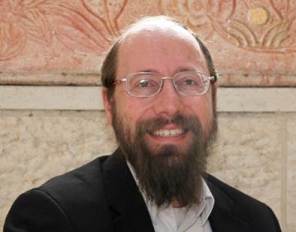Beit Midrash
- Sections
- Chemdat Yamim
- Parashat Hashavua
- Torah Portion and Tanach
- Shmot
- Pkudei
The haftara of Pekudei (not read this year for two reasons) discusses the matter, in the words of Shlomo: "It was in the heart of my father, David, to build a house for Hashem, the G-d of Israel. Hashem said to my father David: ‘Because it was in your heart to build a house for My name, you were good for having it in your heart. However, you will not build the house, but the son who will come out from your loins, he will build the house for My name.’ Hashem kept His word that He said, and I have succeeded my father, and I have sat on the seat of Israel, and I have built the house for the name of Hashem, the G-d of Israel" (Melachim I, 8:17-20 – these p’sukim have parallels in three other places in Tanach). David did not sleep at night as he waited to fulfill his part this life dream, as he describes so beautifully in Tehillim 132:3-5. It is not clear what the exact reason is, considering that David was praised for wanting to build the House.
In the third beracha of Birkat Hamazon, we ask Hashem to act with mercy toward: Israel, Yerushalayim, Zion, the place where the Divine Presence dwells, the monarchy of the House of David, and the great and holy House upon which Hashem’s name is called. According to this order, the House of David precedes the Beit Hamikdash, and this is the key to the solution of the riddle. Before there can be a Beit Hamikdash, there must be a proper kingdom in Israel. To have a permanent house, as opposed to a movable Mishkan, there must be a permanent monarchal dynasty. Both these critical elements are part of a holy selection, determining who will be sanctified to lead and where the relationship with Hashem will be focused.
Let us return to the order discussed in Birkat Hamazon. First Israel was chosen from among the nations. Then Yerushalayim was chosen from among the places as the eternal spiritual center. Then David was chosen as the founder of the eternal dynasty. Only then could he be involved in building the eternal Beit Hamikdash. However, there is no dynasty until the king is succeeded by his son, at which point the Beit Hamikdash can be built. David was rewarded for all the battles he fought on behalf of Bnei Yisrael and became the first in the chain of kings.
It is fascinating that no previous ruler had the distinction of giving over the political leadership to his son (the kohanim, descendants of Aharon, are leaders of a very different type). Moshe did not pass it on to his son, nor did Yehoshua. None of the shoftim did so, and the great leaders whom David knew, Shmuel and Shaul, also did not succeed in this.
One of the lessons for our times is that the path to the building of the Beit Hamikdash and promoting the eternal values of the nation requires a partnership that includes the political and military development of the Jewish State.

Parashat Hashavua: More on Weddings and Mending Family Fractures
Rabbi Yossef Carmel | Tevet 5786

Yosef Returns Home
Various Rabbis | 5770

Do Not Desecrate the Land
Rabbi Yossef Carmel | Tammuz 5767





















